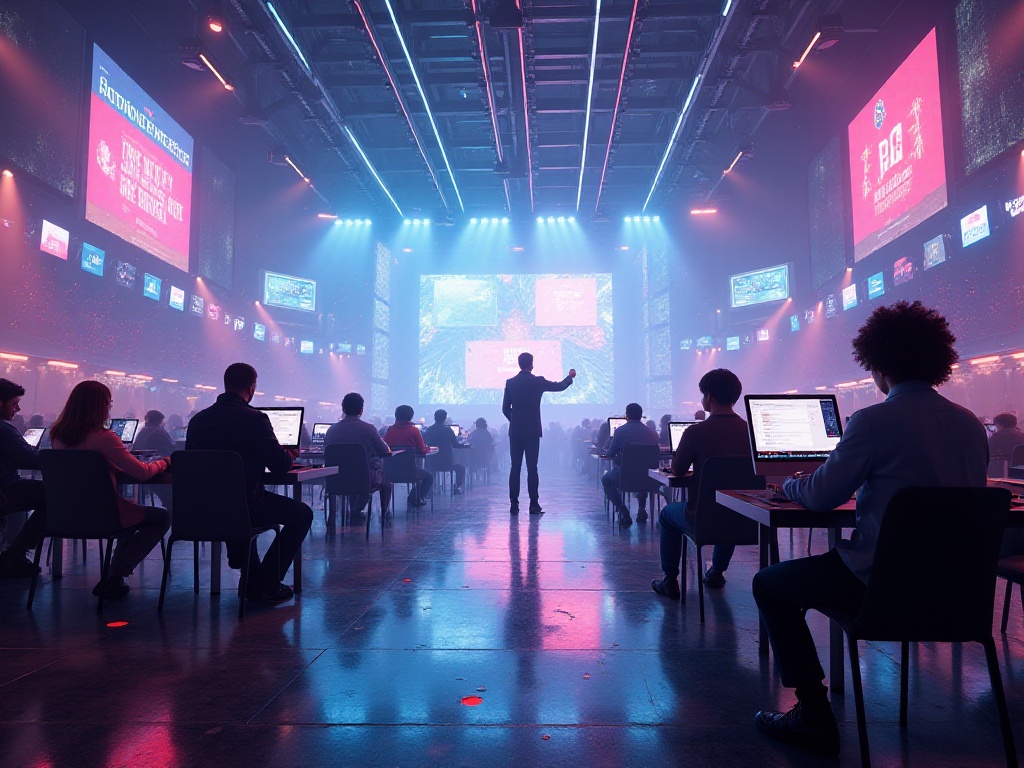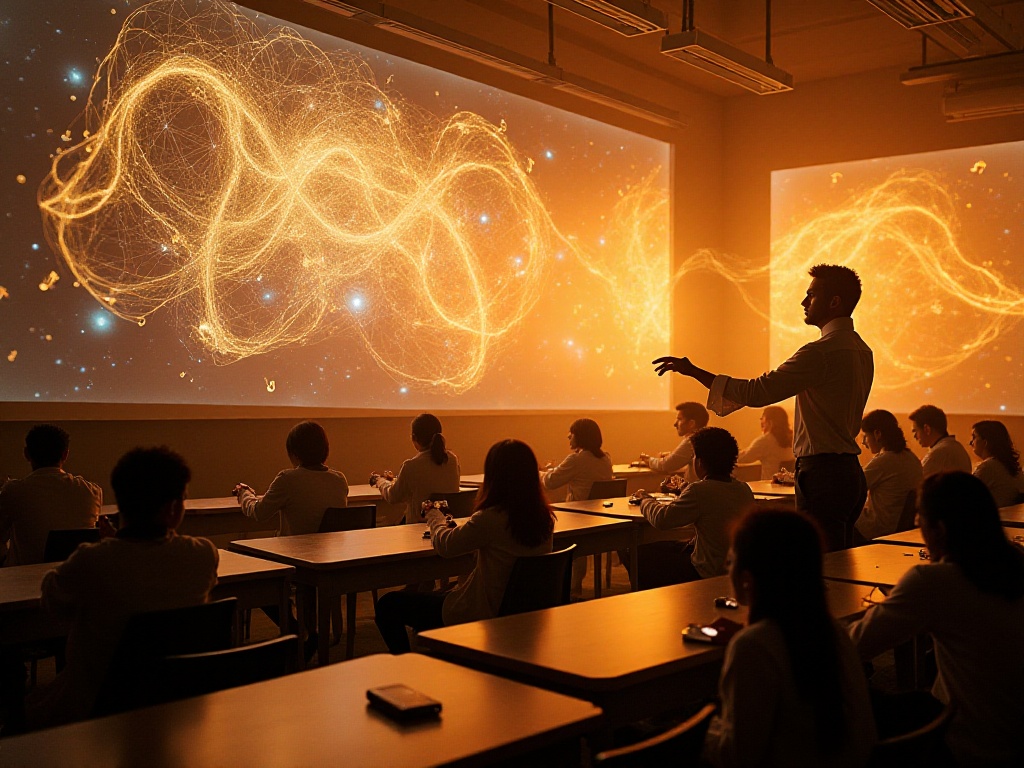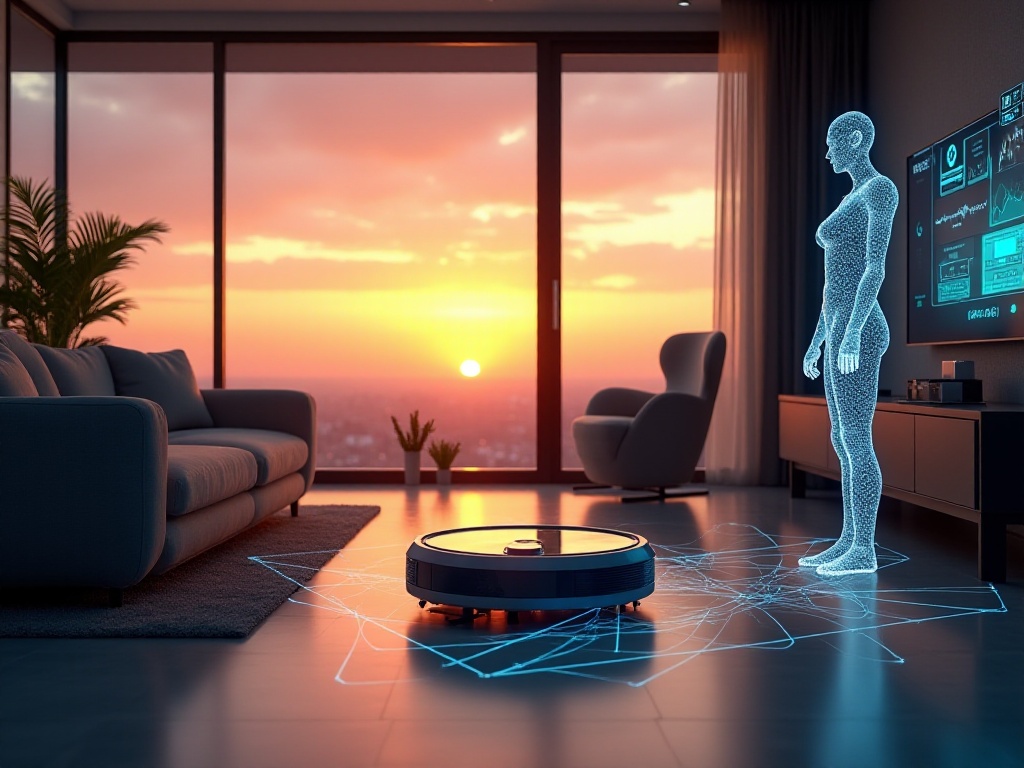Opening Chat
I've been pondering a question lately: what changes will artificial intelligence bring to education? As a frontline educator, I deeply feel that AI is quietly transforming every aspect of education. We witness revolutionary changes in the education field every day, from traditional blackboards and chalk to intelligent teaching equipment, from uniform teaching models to personalized learning experiences. Today's educational environment is truly amazing, let's take a look at how AI is reshaping modern education.
Personalized Learning
I remember when I first became a teacher, facing over forty students, it was always difficult to accommodate everyone's learning pace. Some students learned quickly and easily got distracted in class; others had relatively slower comprehension and worried about asking too many questions that might delay their classmates. This situation was really troubling. Now, with AI-driven intelligent tutoring systems, this problem is being perfectly solved.
Take Carnegie Learning for example, this system is like having a super tutor available 24/7 for each student. It can track students' learning trajectories in real-time, precisely analyze their mastery of each knowledge point, and then customize the most suitable learning path for them. For instance, when the system detects that a student is struggling with a mathematical concept, it automatically adjusts the difficulty level and provides more practice and explanations. If a student has completely mastered a concept, the system automatically skips the basic content and directly recommends more challenging problems.
This intelligent system not only accurately judges students' learning levels but also recommends the most suitable learning methods based on each student's learning habits and interests. For students who prefer video learning, the system pushes more instructional videos; for those who learn better through practice, it provides more interactive exercises.
Data shows that students using such systems have seen an average 35% improvement in learning efficiency. This number reflects that every student can learn at their own pace, neither feeling pressured by too fast progress nor losing interest due to overly simple content. More importantly, students' learning motivation has significantly improved. The system provides immediate encouragement and suggestions based on their performance, allowing them to clearly see their progress.
Today's students are truly fortunate - they no longer need to worry about keeping up with class pace or missing learning opportunities because they're too shy to ask questions. Everyone can find the learning method that suits them best, truly realizing the educational concept of teaching according to individual abilities. Moreover, these personalized learning systems continue to evolve, becoming increasingly intelligent and user-friendly.

Smart Classroom
Speaking of classroom teaching, the changes now are truly revolutionary. I remember in our era, the most advanced teaching equipment was just a projector, and teachers relied solely on chalk and voice to teach. But now, walking into a classroom is like stepping into a science fiction scene.
Last year, I visited a demonstration school using the Nearpod platform, and the scene truly opened my eyes. There were no traditional blackboards in the classroom; instead, there were huge interactive smart screens. Teachers created immersive classrooms using AI technology, making learning incredibly vivid and interesting.
Imagine students learning geography, and suddenly a lifelike 3D Earth model appears on the classroom's large screen. Through simple gestures, students can freely rotate the Earth, zoom in on areas of interest, and even "fly" to any location for field investigation. When studying the Amazon rainforest, for example, the system automatically generates a 3D model of the rainforest, allowing students to experience the forest's layered structure, observe the living environment of flora and fauna, and even hear the sounds of the tropical rainforest through virtual reality technology.
It's not just geography; learning in other subjects has become extraordinarily interesting. In physics class, complex experiments can be demonstrated through 3D simulations, allowing students to clearly observe molecular motion trajectories; in history class, major historical events can be recreated through holographic projections, giving students an immersive historical experience; in biology class, human body structures can be presented in 3D through AR technology, allowing students to study organ functions through gesture control.
Most amazingly, the system can collect student interaction data in real-time. For instance, when it notices that most students have less interaction with certain knowledge points, it immediately reminds the teacher that further explanation might be needed; when it detects that some students' attention is starting to wander, the system automatically adjusts how the teaching content is presented to re-engage students in learning.
Teachers can also monitor each student's learning status in real-time through the system. For example, during group discussions, the system automatically records the number and content of each student's contributions, helping teachers better understand# AI-Empowered Educational Innovation: 7 Breakthrough Applications from a Veteran Educator's Perspective

Opening Chat
As a newcomer to education, I witness the tremendous changes that artificial intelligence brings to the education field every day. I remember during my internship, seeing teachers overwhelmed with grading assignments and preparing lesson plans, but now, all of this is quietly changing. With AI technology's support, education is becoming more intelligent and humanized. Let's look at these exciting changes together!
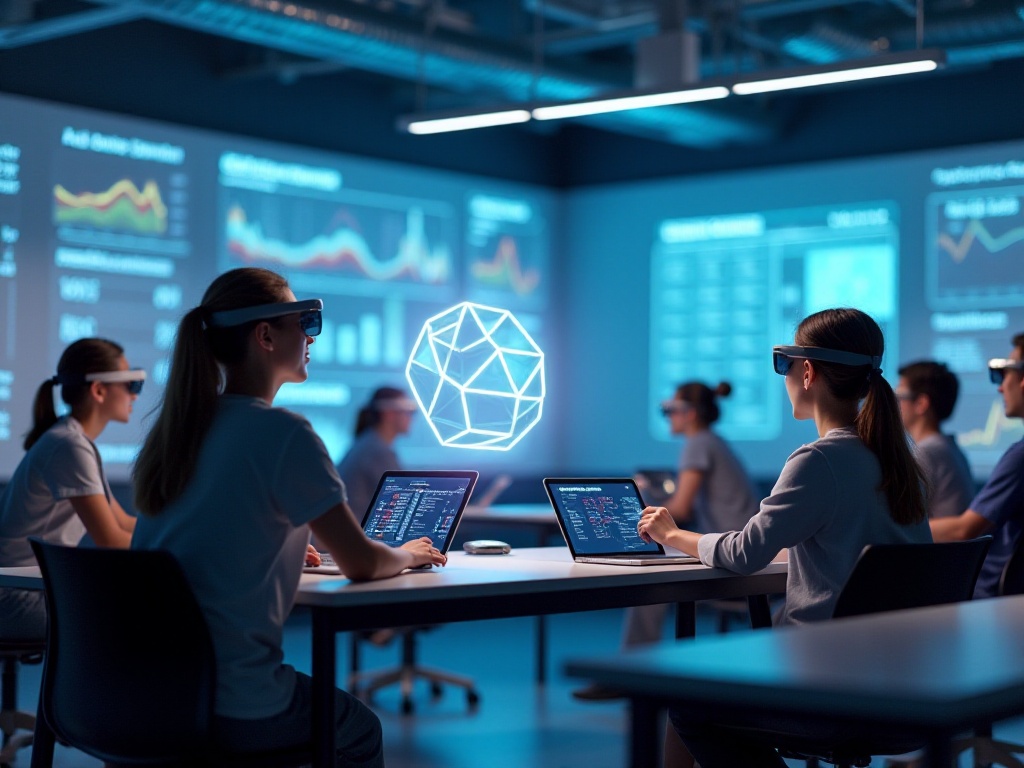
Personalized Learning
I remember when I was in school, I was always anxious about not keeping up with the teacher's pace. Sometimes the teacher taught too fast, and before I could understand one concept, the next one was already being introduced; other times the content felt too simple, and I would doze off in class. But now, this situation has greatly improved.
AI tutoring systems like Carnegie Learning are like timely rain on the learning journey. They not only precisely identify each student's knowledge gaps but also adjust difficulty in real-time based on learning progress. For example, when the system notices that I consistently make mistakes in the completing the square step when solving quadratic equations, it specifically arranges more practice in this area and uses animations to demonstrate the process.
Interestingly, the system also arranges content according to each student's learning habits. For students like me who have higher learning efficiency at night, the system pushes more challenging problems in the evening; during the afternoon when concentration is lower, it arranges some light and fun interactive exercises.
Through this precise personalized learning, I've witnessed many students' progress. Xiao Ming, who originally had a weak foundation, improved his math score by 15 points in one semester through the system's targeted training. Meanwhile, top student Xiao Hong not only consolidated existing knowledge but also completed the next semester's content in advance under the system's guidance.
Smart Classroom
Speaking of smart classrooms, it's truly eye-opening. The other day, I taught a biology lesson using the Nearpod platform about the human circulatory system. Through AI-generated 3D human body models, students could clearly see the process of blood flowing through vessels and even zoom in to observe details of red blood cells carrying oxygen.
Classroom interaction has also become more diverse and colorful. For example, when explaining heart structure, I set up a virtual laboratory letting students operate and observe heart rate changes under different exercise intensities. The system also collects each student's operation data in real-time, helping me understand which students have mastered the key points and which ones need additional tutoring.
What delights me most is the classroom feedback system. Through facial expression recognition technology, the system can analyze students' concentration levels and emotional states. When it detects that most students show tired or confused expressions, the system promptly reminds me to adjust the teaching pace or try a different approach to explain.
This immersive learning experience has greatly increased students' interest in learning. Xiao Zhang, who previously couldn't get excited about biology class, now sits in the front row and actively answers questions. After the midterm exam results came out, the class average score increased by 8 points compared to last semester, making me deeply feel the changes brought by technological innovation.
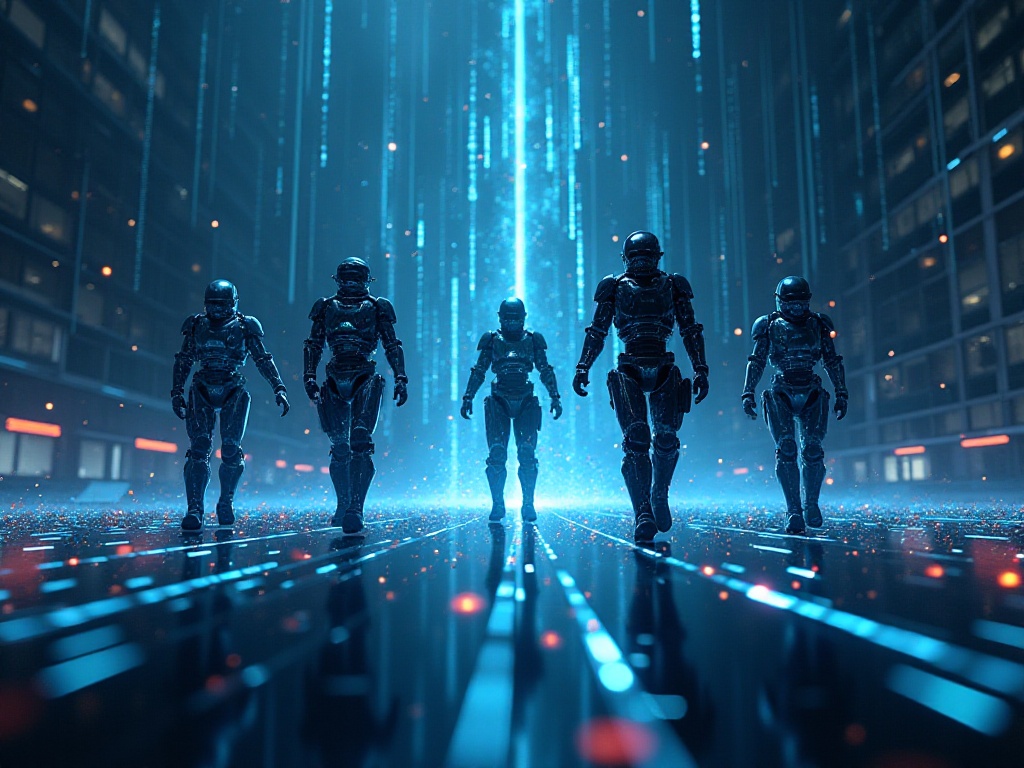
Teacher's Assistant
As a novice teacher who often works late into the night, I absolutely love intelligent assistants like TeachMateAI. I remember when I first started preparing lessons, a 45-minute class would take several hours to prepare, and I still felt the courseware wasn't engaging enough. Now with AI assistants, things are completely different.
For example, when I need to prepare a Chinese literature lesson about "Dream of the Red Chamber," I just need to input the course topic and teaching objectives, and the system automatically generates a lesson plan framework. Moreover, it recommends relevant teaching resources, including classic passage analysis, character relationship maps, and plot development flowcharts. Best of all, these resources are carefully selected based on students' cognitive levels and interests.
Grading assignments has also become much easier. The system not only automatically grades objective questions but also provides intelligent scoring and feedback for subjective questions. For example, when grading essays, it analyzes multiple dimensions like structure, word choice, and grammar, and provides specific revision suggestions. This not only saves my time but also gives students more detailed feedback.
Data shows that after using AI assistants, teachers' lesson preparation time has decreased by an average of 65%, and assignment grading efficiency has improved by 70%. With the time saved, we can design more creative teaching activities or provide more personalized tutoring to students.
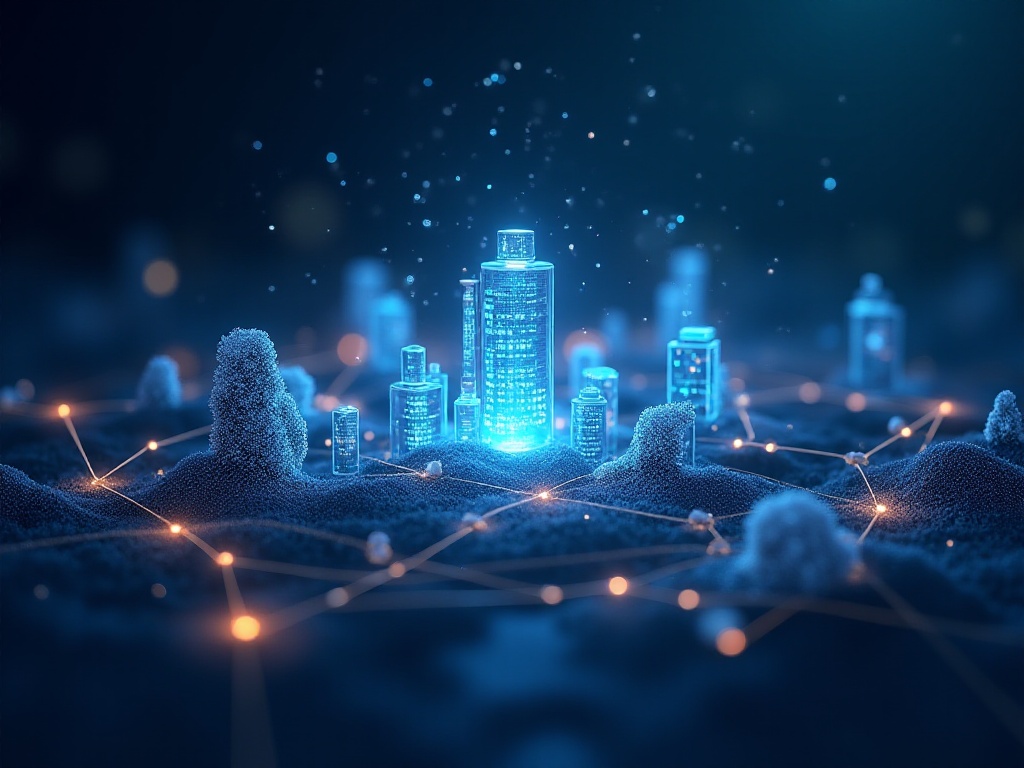
Data Analysis
In the big data era, educational assessment is no longer limited to test scores alone. Today's AI systems are like attentive observers, recording every detail of students' learning process.
For example, by analyzing Xiao Li's homework and test data history, the system discovered that he often makes mistakes when setting up equations in physics calculation problems. Further analysis revealed that his understanding of force decomposition concepts wasn't clear enough. With this discovery, I could specifically supplement his knowledge in this area rather than simply assigning more practice problems.
The system can also create knowledge maps for each student, visually showing their learning progress. For instance, in mathematics, I can clearly see each student's mastery level in different areas like algebra, geometry, and probability statistics. This data not only helps me better understand students' learning situations but also allows parents to stay informed about their children's learning progress.
More amazingly, the system can predict potential learning difficulties students might encounter. By analyzing historical data, it can identify which knowledge points are likely to become learning bottlenecks, allowing us to prepare in advance. For example, before teaching trigonometric functions, the system will remind me to review similar triangles first, as data shows there's a strong correlation between these two concepts.

Special Education
In special education, the application of AI technology is even more touching. Through the SchoolAI platform, many previously difficult problems have found solutions.
For example, the platform's speech-to-text function not only converts teachers' speech in real-time but also intelligently identifies keywords and automatically generates highlighted notes. This helps hearing-impaired students better keep up with class pace without missing important information. The system also performs reverse conversion based on students' lip movements, helping them better express their thoughts.
For students with attention difficulties, the system monitors their attention state through eye-tracking technology and timely inserts interesting interactive segments to improve focus. In my class, a student with ADHD has extended his classroom focus time from 10 minutes to 25 minutes with the system's assistance.
Language barriers are no longer a problem either. Real-time translation functionality not only supports translation between multiple languages but also automatically adjusts expression methods based on students' language levels. For example, for foreign students who just arrived in China, the system uses simpler vocabulary and sentence structures to explain complex concepts.
What moves me most is that these technologies have truly achieved educational inclusivity. Students who might have been marginalized before can now find suitable learning methods. Statistics show that after adopting these assistive technologies, special education students' academic performance has improved by an average of 25%, and more importantly, their learning confidence has greatly increased.

Management Efficiency
In educational management, AI applications are equally impressive. I remember when I first came to the school, seeing the academic affairs office staff tormented by various forms and reports. Now with the AI management system, these tedious tasks have become much simpler.
The course scheduling system is particularly intelligent, considering not only teachers' professional expertise and time arrangements but also optimizing course arrangements based on students' learning patterns. For instance, it schedules courses requiring high concentration in the morning and activity-based courses in the afternoon. The system also automatically avoids unreasonable arrangements like having math class immediately after physical education.
The attendance system has also been upgraded, automatically recording student attendance through facial recognition technology. If it notices that a student frequently misses class or arrives late, the system automatically notifies the homeroom teacher and parents to understand the situation promptly.
Grade management has become more intelligent. The system not only automatically analyzes various test data but also generates detailed analysis reports. For example, it can tell us whether there are differences in how well certain concepts are mastered between different classes, helping us adjust teaching strategies timely.
More importantly, these systems are interconnected. For instance, when the course management system detects abnormal fluctuations in a class's average scores, it automatically queries attendance records, classroom performance, and other related data to help identify possible causes. This comprehensive data analysis makes educational management more scientific and efficient.
Future Outlook
As a young teacher who has personally experienced the intelligent transformation of education, I'm full of anticipation for the future. I believe that with the continuous development of AI technology, future educational scenarios will become even more exciting.
Imagine that in the near future, every student might have an AI learning companion accompanying them throughout their entire learning journey. This AI companion not only understands their learning characteristics but can also adjust learning content and pace based on their emotional state.
The role of teachers will also transform, changing from knowledge transmitters to learning guides. We will have more time to focus on students' overall development, cultivating their creativity, critical thinking, and emotional intelligence.
Of course, we must also clearly recognize that no matter how advanced technology becomes, it cannot replace the humanistic care in education. True education will always need teachers' wisdom and warmth. AI is like our good assistant, allowing us to focus more energy on truly important matters.
Let's look forward together to education becoming more equitable, efficient, and warm-hearted with AI's help. I believe that in the near future, every child will be able to find the most suitable learning method for themselves and shine their brightest light.



